What is a moving head light
A moving head light is an automated lighting system that has motorized control of beam movement and may offer motorized functions for gobo, color and zoom changes. Stage lighting is no longer a matter of simple illumination as it was throughout the 1900’s. Today, stage lighting design involves far more than just illuminating the stage for visibility. Lighting designers strive to be masters of art, science, and psychology in order to paint the stage with light that moves an audience emotionally, creates an atmosphere supportive of the play’s production concept, and accentuates a character in a play.
Modern production facilities range from theaters, auditoriums, and concert halls to arenas, stadiums, commercial showrooms, and shopping malls. The types of production and visual display, which include opera, ballet, modern dance, live concerts, disco, art exhibition and industrial shows, are just as varied as the types of facilities. Every production or stage will present new challenges in making creative imagination a reality for productions and shows. As the most versatile stage lighting instrument, moving head lights allow you to tie together all the visual elements of the production—color, direction, intensity, form and movement—in any venue and take a show or performance to a whole new level.
A creative, sophisticated tool for stage lighting
In the history of the stage lighting, few fixtures combine such a high level of sophistication and complexity in one package as moving head lights do. Conventional stage lights such as PAR can lights, ellipsoidal reflector spotlights, Fresnel spotlights, followspots and cyc lights are static systems that do not have automated controllability of beam direction. Moving fixture lights not only have motor-driven pan and tilt capabilities, the vast majority of these products can project gobos, perform color mixing, harden and soften the beam edge, and zoom for adjustable beam spreads through network or software-based lighting control and the use of electromechanical systems.
These automated lighting systems brought a new dimension to theatrical, display, photographic, film and television lighting design. The ability to create dynamic changes in color, direction, intensity and form, whether rapid or very subtle, slow and imperceivable, offers lighting designers endless possibilities to put their imagination to work for composing the most breathtaking visuals and awesome light shows ever. Over the past decade, moving head lights have moved from being novelty items for professional shows to standard equipment for just about any type of entertainment or commercial accent lighting applications.
LED technology introduces a rainbow of exciting possibilities
The world of stage lighting is growing by leaps and bounds. LED technology is massively pushing the boundaries of lighting performance and unlocking a wave of advancements in the development of automated lighting systems beyond just improvements to light source efficiency and life. LEDs are semiconductor devices that allow digital control of their light output.
The digital nature of LED technology brings illumination and automation together. LEDs can be seamlessly integrated with electronic logic circuits or processors. As increased processing capacity finds its way into lighting systems, moving to digital control facilitates implementation of sophisticated lighting control algorithms and provides for more advanced lighting scene control. Instantaneous dimmability over a full range of intensity provides LED stage lights the ability to deliver the right amount of light for subtle or spectacular lighting effects. This level of controllability makes it possible for flawless additive color mixing from the three primary colors of light. Individually addressing and controlling single-color or full-color LED lighting nodes enable a luminaire to display dynamic effects from its light emitting surface (LES).
The spectral power distribution (SPD) of LEDs can be precisely engineered at the chip- or package-level to deliver the precisely controllable color characteristics for any application. LEDs provide instant light and their lifespan is not affected by high frequency switching. These characteristics lend automated luminaires electronic shutter capability.
A multidimensional engineering work
The design of an automated lighting system is a multidimensional engineering work which involves the use of disparate technologies including optoelectronics, optics, mechanics, robotics, and electronics. The composition of moving head lights is poised to grow more complex with the integration of LED technology and more advanced intelligence. In addition to the light module, every moving head light, regardless of the type, typically comprises the optical, electrical, electronics, electromechanical and mechanical systems.
Traditional fixtures may use an incandescent lamp, an arc lamp or a plasma lamp as the light source. The light module of an LED moving head light may be an integrated LED array or an assembly of SMD LEDs assembled on a metal core printed circuit board (MCPCB). The integrated LED array is usually a chip-on-board (COB) package which has a large array of small dies mounted onto an MCPCB or a ceramic substrate. The COB LED is used in single-color lighting applications where a high beam uniformity is required. The SMD LED module may be a single-color assembly or a multi-color assembly which contains at least the red, green and blue LEDs for additive color mixing. LEDs of additional colors, such as such as amber, white, and/or lime, may be added to the LED array to expand the color gamut and improve the color quality of the pastel shades.
The RGB, RGBW, RGBA or other color mixing variants may be designed as the “analog” type or the “digital” type modules. The color or intensity control of analog LED modules occurs at the channel level. LEDs on the same controlled circuit respond to on/off switching or dimming control signals in the same fashion. Digital color mixing modules offer the ability to assign color or intensity to individual LEDs. These LEDs are equipped with onboard circuitry which can interpret control signals from a master controller and drive the LEDs in accordance with the commands. The SMD LEDs are typically ceramic-based or CSP packages in which a high efficiency thermal path is provided to enable high drive current operation.
Optical system
The optical system may consist of reflectors, lenses, color media, gobos, and effects. Moving head lights come in spot, profile and wash varieties. Zoomable beam optics give full beam control over both short and longer throw distances. Color wheels are used by many of the “ellipsoidal” types of moving head lights to accommodate dichroic filters and perform CMY subtractive color mixing. Color selection is accomplished by cycling the color wheel until the dichroic filter with the desired color is in the optical path. The number of colors that can be used to enhance source light is limited to the number apertures in the color wheel. Most automated fixtures are equipped with a color wheel having between 8 and 12 available colors, including CTO and CTB filters offering control over color temperature adjustment. A second color wheel is used in some luminaires to extend the range of available colors. The additional wheel doubles as color correction in addition to color modifying filters.
Next in the optical train are two gobo wheels with at least one of them being rotatable. Gobos are inserted in the focal plane of a luminaire to create aerial and projected visual effects. Multi-faced rotatable and indexable prisms split the beam into several dynamic projections, creating spectacular mid-air effects. An infinitely adjustable iris helps size the beam as desired and create columns of light in different diameters. A continuously variable frost filter softens the beam edge producing the wash effect of a Fresnel lens. Profile luminaires include framing shutters to control precisely where the light goes or strobe the light on and off at some rate of speed. An animation wheel which is continuously indexing or rotatable is used to create dynamic motion effects.
Mechanical system
The mechanical system is made up of the housing, heat sink, and moving parts including gears, belts, bearings, axles, and the chassis. Components that convert electrical energy to movements form the electromechanical system.
The most common way of producing movement for pan/tilt, zooming, gobo and color changes, prism rotation and strobe effects is with stepper motors. A stepper motor is a brushless, synchronous electric motor that converts electrical pulses into discrete mechanical movements. It rotates its shaft in a series of discrete angular intervals or steps and can also maintain a very large static torque in a static position when its coils are energized. Due to such characteristics, stepper motors can be commanded to move and hold at one of these steps for precisely controllable mechanical movement. The vast majority of stepper motors used in moving head lights are hybrid motors which are combinations of the variable reluctance and permanent magnet type motors, with their construction characterized by having a coil, multi-toothed stator and rotor poles with a permanent magnet.
Another type of electromechanical device used in automated lighting is the cooling fan. Because of the intense heat generated by the LED module and power supply, active cooling is critical to the reliable operation of automated luminaires. The cooling fan pulls in the cold ambient air to the heat sink surfaces and convects the heated air away from the heat sink. Two types of fans are used in moving head lights including axial fans (muffin fans) and radial fans (centrifugal fans).
Electrical system
The electrical system serves to drive the light engine and supply low-voltage power to the electronics systems and electromechanical systems. As LEDs are current driven, low voltage devices sensitive to current and voltage fluctuations, they must be operated by a constant current power supply which provides appropriate DC power to drive the LEDs under supply voltage or load variations. Efficiency, lifespan, power factor correction (PFC), dimming, EMI filtering, flicker removal, transient suppression, over-temperature protection, and overcurrent protection are on the list of design concerns for LED drivers. Dimming is an integral part of lighting control strategy.
Pulse-width modulation (PWM) is the logical choice of technology for dimming LEDs. PWM dimming provides full range, digitally controllable dimming capability, which makes it possible to produce predictable colors from additive color mixing. The motors and fans are connected to a 24 V DC supply. The electronics system is driven by a low-voltage supply, usually either 3.3 V DC or 5 V DC. The power supplies used in automated luminaires are typically implemented as switched-mode power supply (SMPS) systems. Linear power supplies are becoming increasingly rare as their efficiency and performance are limited and economies of scale are enabling SMPS systems to be more affordable.
Electronics system
The electronics system of an automated luminaire consists of central processing unit (CPU), memory, control signal transmitters and receivers, digital-to-analog converters (DACs), and position-sensing circuitry. It takes the control signal input, decodes the binary coded instructions in the programmed code, and executes commands to control light output and motor movements. The CPU is the brain of moving head light as it processes data, performs arithmetic operations, execute instructions, and output data. For automated lighting applications the CPU can be a microprocessors (μP), a microcontroller (μC), or an application specific integrated circuit (ASIC).
The processor communicates with an automated lighting controller by way of the I/O which is usually a discrete chip such as a peripheral interface adaptor (PIA) or a programmable peripheral interface (PPI). The microcontroller, which is essentially a computer on a chip, might have built-in I/O devices which can include DACs, universal asynchronous receiver transmitters (UARTs), and serial peripheral interfaces. The automated lighting controller is usually a lighting console or desk that offers a suite of features such as fixture libraries, off-line editors, effects generators, pixel mapping, and visualizers. There’re PC-based controllers which are nothing more than a software program running on a laptop or desktop computer.
Lighting control
The processor sends and receives serial data through the data link using a communication protocol such as DMX512, Remote Device Management (RDM), or Architecture for Control Networks (ACN). The different controllable properties of the moving light, including intensity, pan, tilt, focus, color, gobo, size, sharpness, focus, iris, frost and other characteristics, are called attributes. Each attribute corresponds to a DMX channel. All attributes are initially assigned to one of the four categories: the beam, the image, the color and the position, or to a fifth one called None.
Every fixture is assigned an electronic personality which specifies the attributes for the fixture and describes how it can be controlled. Multiple moving head lights can be set to run preset programs in a master/slave configuration with no external controller. A larger number of fixtures can be controlled to run simultaneously on a network for sophisticated light shows.
Relatively simple installations can be managed with DMX control. DMX is a unidirectional communication protocol, whereas both RDM and ACN allow for bi-directional communication between a luminaire and one or more controllers. Ethernet can be used as a transport for DMX512 data using ACN, ArtNet, Pathport, ETCNet3, or ShowNet to handle large-scale installations.

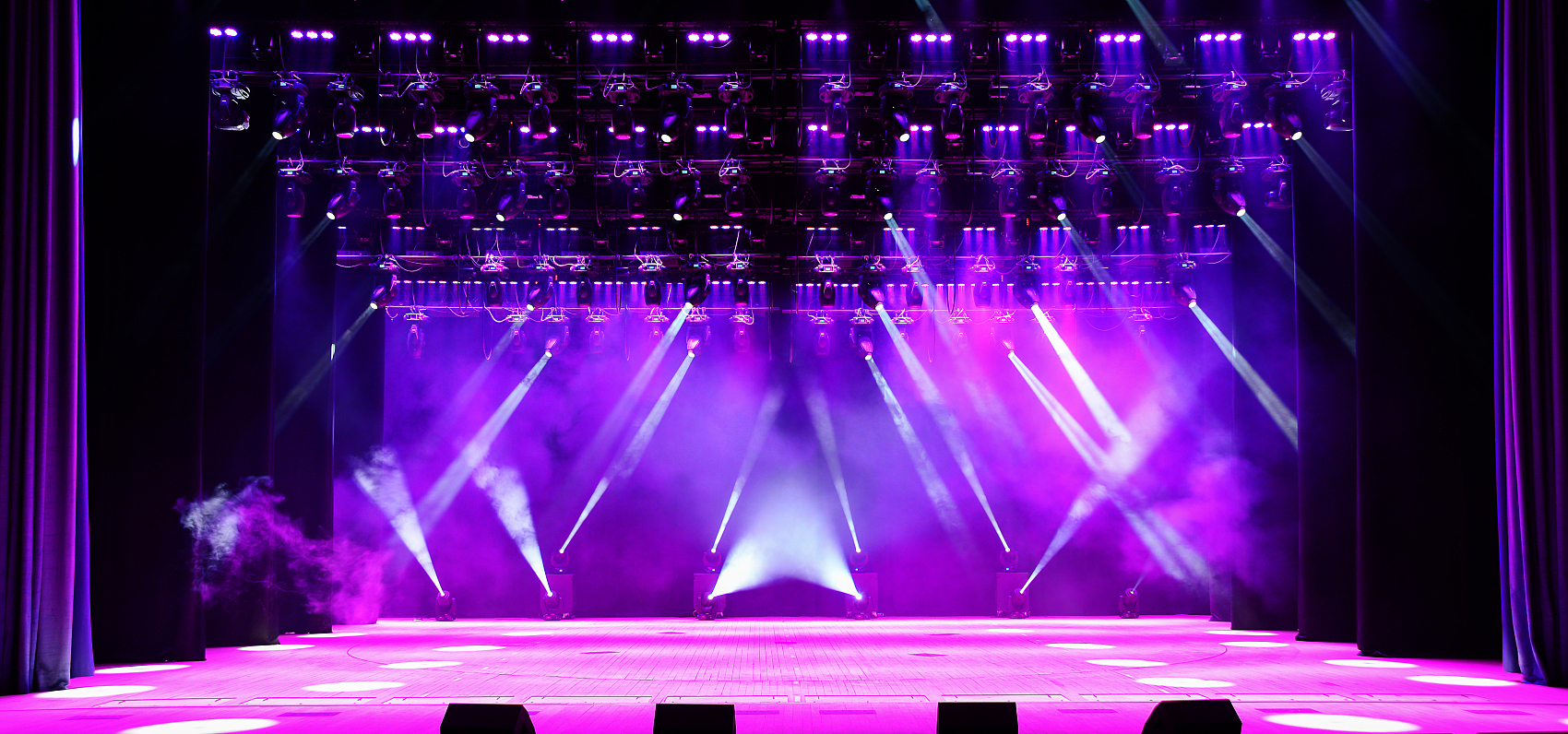
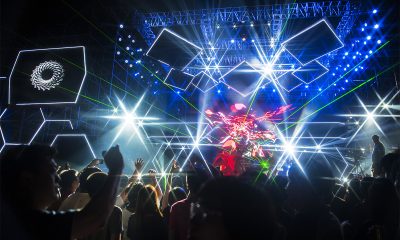
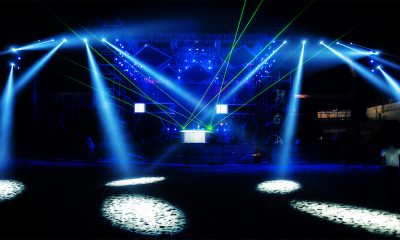
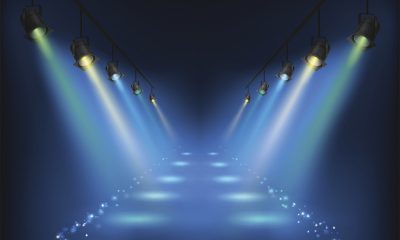

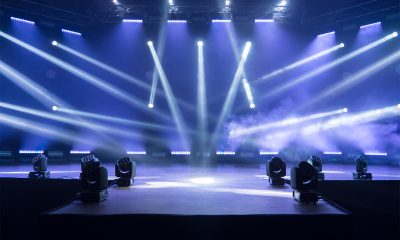
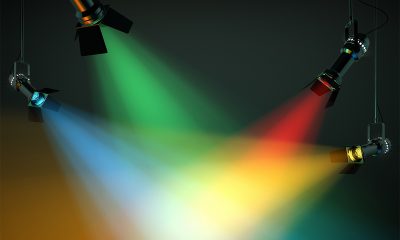

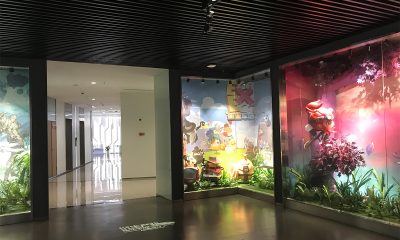





Loading...